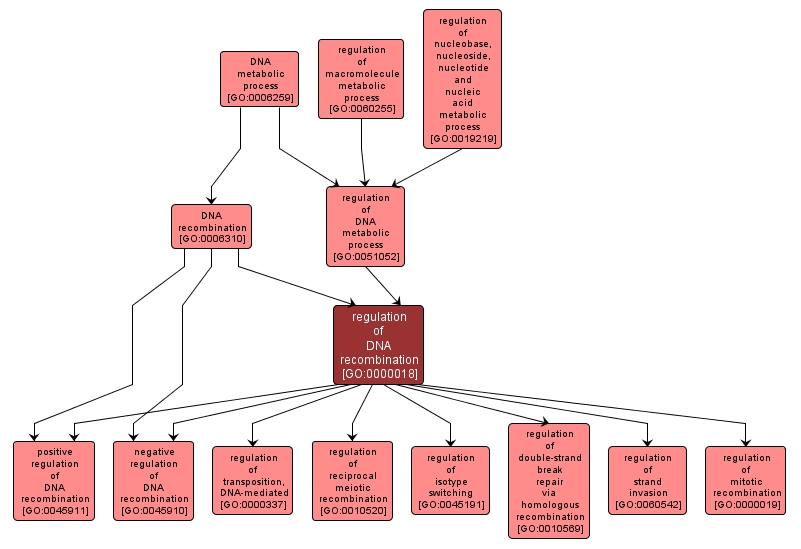GO TERM SUMMARY
|
| Name: |
regulation of DNA recombination |
| Acc: |
GO:0000018 |
| Aspect: |
Biological Process |
| Desc: |
Any process that modulates the frequency, rate or extent of DNA recombination, a process by which a new genotype is formed by reassortment of genes resulting in gene combinations different from those that were present in the parents. |
|

|
INTERACTIVE GO GRAPH
|














